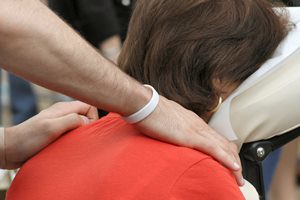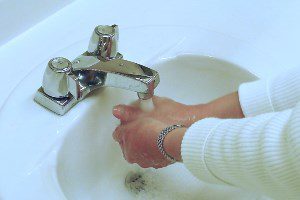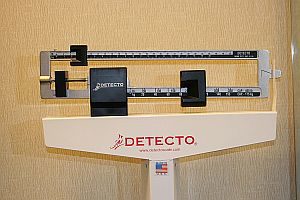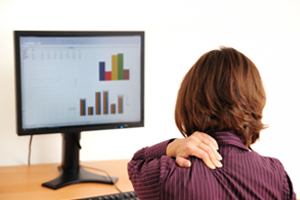Massage Therapy: It’s Not Just for Rest and Relaxation!
 What do you think about when you hear the word “massage”? If you’re like many people, you associate massage with a day of pampering at an exclusive resort spa in the mountains or at the beach. But if that’s the first picture that comes to mind, you might be missing something very, very important. That something is the therapeutic value of massage—the ways that massage can actually improve your health and well-being.
What do you think about when you hear the word “massage”? If you’re like many people, you associate massage with a day of pampering at an exclusive resort spa in the mountains or at the beach. But if that’s the first picture that comes to mind, you might be missing something very, very important. That something is the therapeutic value of massage—the ways that massage can actually improve your health and well-being.
While it is certainly true that many types of massage do help with relaxation, therapeutic massage also has a variety of important health benefits. For instance, therapeutic massage:
- Accelerates healing by improving the circulation of blood and lymph to injured areas
- Promotes flexibility by stretching and loosening muscles and connective tissue
- Improves muscle tone and helps prevent or delay muscle atrophy cause by prolonged periods of forced inactivity
- Relieves pain in joints by reducing inflammation and swelling in joints
- Increases the effectiveness of chiropractic adjustments
Practitioners and patients alike have discussed these types of benefits for many years, but researchers have recently made a great deal of progress collecting and analyzing clinical data to understand the effects of therapeutic massage. Here are some “headlines” from their work as well as a few “notable quotes” from their study findings.
Improved Circulation and Post-Exercise Pain Relief
Investigators at the University of Illinois at Chicago recently conducted a study to determine whether or not massage improves general circulation and relieves soreness after exercise.
- “Our study validates the value of massage in exercise and injury, which has been previously recognized but based on minimal data,” said Nina Cherie Franklin, UIC postdoctoral fellow in physical therapy and first author of the study. “It also suggests the value of massage outside of the context of exercise.”
- “We believe that massage is really changing physiology in a positive way,” said Franklin. “This is not just blood flow speeds—this is actually a vascular response.”
- Because vascular function was changed at a distance from both the site of injury and the massage, the finding suggests a “systemic rather than just a local response,” she said.
Reduced Chronic Low Back Pain and Improved Mobility
There are more than 100 million massage therapy visits in the U.S. each year, and lower back pain accounts for more than one-third of them. Why? Because massage works!
A study in the Annals of Internal Medicine found that patients receiving massage (whether “structural” massage or “relaxation” massage) had better outcomes than those receiving typical medical care without massage. Measured after 10 weeks and again after 26 weeks, patients who received massage had less pain and better mobility than the control group. At 52 weeks, the results were less clear.
A review in Harvard Health Publications contained some very positive words about the study, which was funded by the National Institutes of Health’s National Center for Complementary and Alternative Medicine:
- “My interpretation of this well-designed study is that massage appears to be at least as effective as standard treatments for chronic low back pain. It might even be better. And it’s likely safer than medicine. Depending on actual costs and insurance coverage, massage may even cost less than usual care.”
- “In my opinion, it’s time massage became a more standard option for the treatment of chronic low back pain.”
The Chiropractic Care – Massage Therapy Connection
Massage is often recommended as an integral part of a broader chiropractic treatment plan, either in the form of massage to loosen muscle tightness before an adjustment, or after an adjustment to help the muscles adapt to the newly-repaired spinal structures. Many patients report that the combination of these two therapies works better than either therapy alone. In our experience, this is most noticeable with conditions that cause chronic pain—chiropractic manipulation or mobilization techniques work to relieve the structural problems and therapeutic massage works to resolve the soft tissue problems. This is why many chiropractors work closely with massage therapists to find the most effective treatment regimen for each patient—the one that returns them to a feeling of health and well-being as quickly as possible. In our Grand Avenue office, here in Billings, Dr. Oblander often works hand in hand with our massage therapists to work with patients who have been in car accidents, are worker’s compensation patients, or who have other issues which our experience tells us would be addressed by combining massage therapy with chiropractic care
If you’re interested in learning more about what massage and chiropractic care can do for you, please give Oblander Chiropractic a call at 406-652-3553! We’ll be happy to discuss your situation with you and to explain our approach. We’re here to help!
 As summer turns to fall, lots of people (children and adults alike) will be spending more time inside and in closer proximity to one-another. Washing your hands is something simple we can all do to keep our schools, workplaces and homes just a little bit healthier. In fact, it’s actually been identified by the US Centers for Disease Control and Prevention (CDC) as the single most effective way to prevent the spread of communicable diseases.
As summer turns to fall, lots of people (children and adults alike) will be spending more time inside and in closer proximity to one-another. Washing your hands is something simple we can all do to keep our schools, workplaces and homes just a little bit healthier. In fact, it’s actually been identified by the US Centers for Disease Control and Prevention (CDC) as the single most effective way to prevent the spread of communicable diseases. It’s no secret that some jobs are just more physically demanding and more dangerous than others. Some of the most challenging ones are obvious—combat roles in the military, fire and rescue, heavy construction and deep sea fishing are just a few that come to mind. However, when it comes to non-fatal musculoskeletal injuries, the statistics tell a very different story about occupational health and safety and about who’s most likely to get hurt on the job.
It’s no secret that some jobs are just more physically demanding and more dangerous than others. Some of the most challenging ones are obvious—combat roles in the military, fire and rescue, heavy construction and deep sea fishing are just a few that come to mind. However, when it comes to non-fatal musculoskeletal injuries, the statistics tell a very different story about occupational health and safety and about who’s most likely to get hurt on the job. Studies have shown that one of the best ways to stick to your fitness regime is to have a reliable fitness partner. Being a fitness buddy means that someone else is counting on you to make them accountable for their workout, keep them inspired and ensure that they are not alone in their quest for fitness. To be a great fitness buddy you just need to keep a few basic guidelines in mind:
Studies have shown that one of the best ways to stick to your fitness regime is to have a reliable fitness partner. Being a fitness buddy means that someone else is counting on you to make them accountable for their workout, keep them inspired and ensure that they are not alone in their quest for fitness. To be a great fitness buddy you just need to keep a few basic guidelines in mind:




